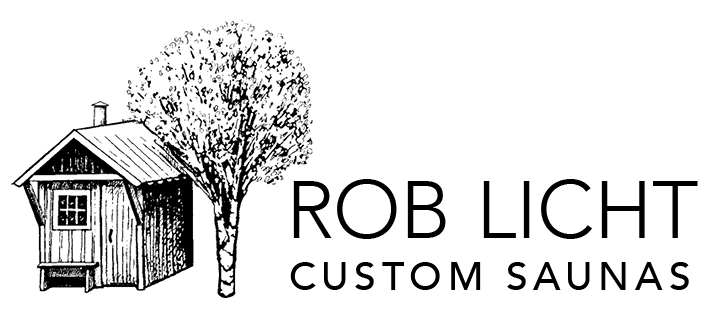The heart of the sauna is the stove, heater, or as the Finns call it, the kiuas. The role of the kiuas is to heat the room. Not like a wood stove, but to heat the sauna rocks, which, in turn, provide the heat and the löyly or steam that make a sauna what it is. In the savusauna, or smoke sauna, which arguably, offers the most authentic experience, there is neither stove nor chimney. There is simply a pile of rocks made into a hearth. A fire is burned within until the rocks are hot (filling the room with smoke) and then, once the fire is extinguished and the room cleared of smoke, the pile of rocks does its thing. Likewise, any sauna, whether it is wood fired or electric, is only ready when the rocks are hot.
When building a sauna, the heater is important. But the rocks are even more important. A good heater will hold a hundred pounds, thus, make good löyly. A cheap heater will provide a few decorative stones and you will feel like you are sitting in an electric oven. I have seen many well-designed saunas in my years and I have seen many poorly built saunas, as well. The worst use some variant of a cheap wood-burning stove with a dented pot of rubble or brick on top. In the best, the rocks are the focal point and they get red-hot. Pick one up and drop it into a pot of water and you can make tea.
Right: Cayuga Lake beach stones— can you spot the erratics?
The type of rock is critical: they should be igneous in origin, formed deep in the hot earth or in the furnace of a volcano. Think of these rocks as heat loving. Granite, grabbro and basalt are typical examples. The Finnish and Swedish units might use grey peridotite. Then there is shape: smooth and round potato shaped rocks or jagged and broken pieces. I prefer the smoother rocks, but there is argument for using the jagged (more surface area). You can order a box of the latter from Tylö that will come all the way from Sweden. Once I opened a box to find a nice hand written note from the fellow who packed them. Another heater company sent me a box from their supplier in Central America. Apparently they needed a geology lesson. The polished siltstone rocks, once heated, started exploding! If you don’t want to have a box of rocks shipped half way around the world or risk getting impaled by rock shards, you can try to find your own.
Unfortunately, our local stone, meaning the rock that is cemented to the landscape here in Central New York, makes horrible sauna rocks. It is all sedimentary: shale, limestone and sandstone. Born in the bottom of ancient oceans, it does not love fire and will complain by exploding if thrown into one. By the way, baptism by fire is a good way to test your rocks if geology eludes you—a good rock will happily glow red-hot. Thankfully, the glaciers that plowed through here brought with them piles of stone from places north that serve the sauna well. These are glacial erratics. As the glaciers retreated and melted, these stones were left behind. The resulting floods that carved our landscape left piles of these smoothed rocks (mixed in with plenty of local stone) in deltas, drumlins or moraines. I find them in the local gravel pit, which mines an ancient delta, or along the lake at my favorite park (another delta) when the water is low. Sometimes I take milk crates with me when I travel through the Adirondacks and fill them with potato-sized anorthosite rocks—which is what the moon is made of—and other pretty granites.
More important than the geology is the significance of the rocks. A Finn, even if they are using a heater with rocks packed in Sweden, will add a spirit stone or two: stones that come from home or some other special place. Stones all have distinct place markers and are borne of this earth and tied to a particular landscape. Except erratics—these have been swept from their homes in a geologic diaspora and found new homes as immigrants, oddities and beautiful accents against the dull grey of the indigenous rocks. Even though I am made of local stone, coming from generations of Central New Yorkers, I have always related to the erratics: the outsiders, the immigrants, the atypical people. They bring us diversity, new culture and traditions like the sauna. In my next sauna you will certainly find plenty of erractics.








